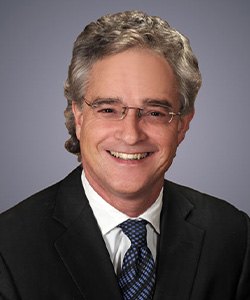Introducing care for venous disease

If your legs ache, swell or feel heavy, especially at the end of the day, you’re not alone. Millions of Americans live with venous disease that includes conditions like chronic venous insufficiency (CVI), lymphedema and lipedema, which can cause pain, swelling and other symptoms.
As a physician, I’ve always believed that helping people live more comfortably and confidently is one of the most rewarding parts of medicine. That’s why, for more than two decades, I’ve focused on treating vein and lymphatic conditions; conditions that may not always be visible to others but can have a significant impact on your daily life.
Recently, I partnered with Bothwell Regional Health Center to bring these services closer to home for patients in this area. I now see patients twice a month at Bothwell Wound Healing Center and perform surgeries at the hospital.
My ties to Missouri run deep. I graduated from the University of Central Missouri and earned my medical degree from A.T. Still University’s Kirksville College of Osteopathic Medicine. My training continued with an internship in Michigan and a residency in Kansas City. Throughout my career, I’ve remained committed to ensuring my patients feel heard, respected and fully informed about their care options.
CVI may sound like a complex diagnosis, but for many people, it starts with simple symptoms like tired legs, swelling and visible veins that slowly worsen over time. The most common cause of CVI is superficial venous reflux, leading to the formation of ropy varicose veins and spider veins.
If this is allowed to persist, it can result in painful skin conditions and ulcerations of the skin of the legs. CVI is more prevalent in women than men and runs in families. Additional risk factors are obesity, pregnancy, prolonged standing and aging. The good news is, most venous conditions can be treated in-office with little downtime, helping you get back to your life without major disruption.
If CVI is allowed to worsen, it can result in lymphatic insufficiency or lymphedema causing further swelling and fluid buildup in the legs and feet. The combined effects of impaired venous and lymphatic circulation can lead to additional skin complications such as infection or ulcers. The swelling and skin changes can be very painful, making it difficult to move or walk around .
If the return of lymphatic fluid back to the heart is slowed it can result in lipedema or abnormal fat deposition in the legs, hip, buttocks or arms. Lipedema is characterized by painful swelling and enlargement of the legs with marked sensitivity to touch and no pain improvement with leg elevation.
Lipedema is classified into stages that progressively worsen in appearance, pain and volume of the extremities. A ketogenic diet has been suggested as a potential intervention for improving fat accumulation and pain due to its anti-inflammatory properties. Manual lymphatic drainage is a conservative treatment option along with compression therapy. Surgical alternative therapies for lipedema include liposuction for patients whose conservative care has not resolved the marked leg discomfort and difficulty with movement.
Whether you’re just starting to notice symptoms or have been managing them for years, know that compassionate, expert care is now available close to home. I pride myself on answering my patients’ questions with clarity and respect and look forward to helping patients here live with less pain and more confidence.
Dr. Scott Darling is board certified and hospital certified in venous/vascular, lymphedema and lipedema medicine and treats these conditions medically and/or surgically. He is on the medical staff at Bothwell Regional Health Center and sees patients from 7 am to 12 pm on the second and fourth Thursday of each month at Bothwell Wound Healing Center. To make an appointment to see Dr. Darling, call Missouri Vein Specialists at 816.792.3400.
